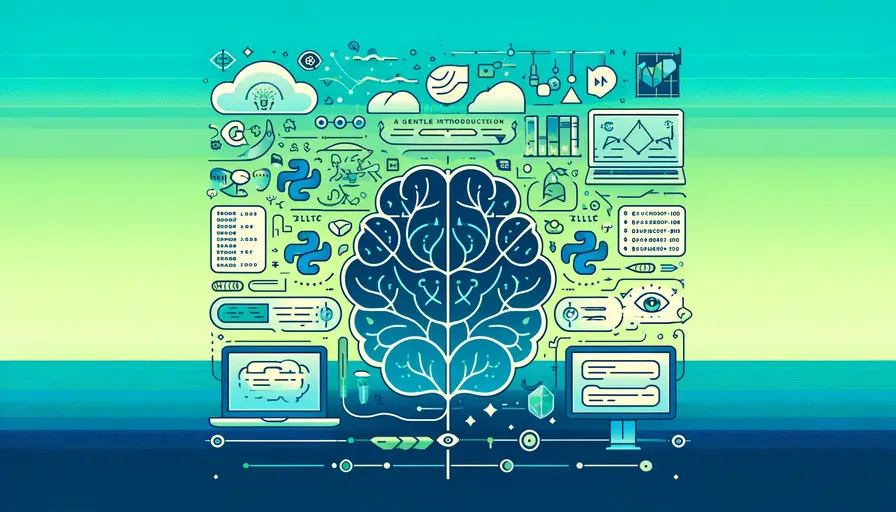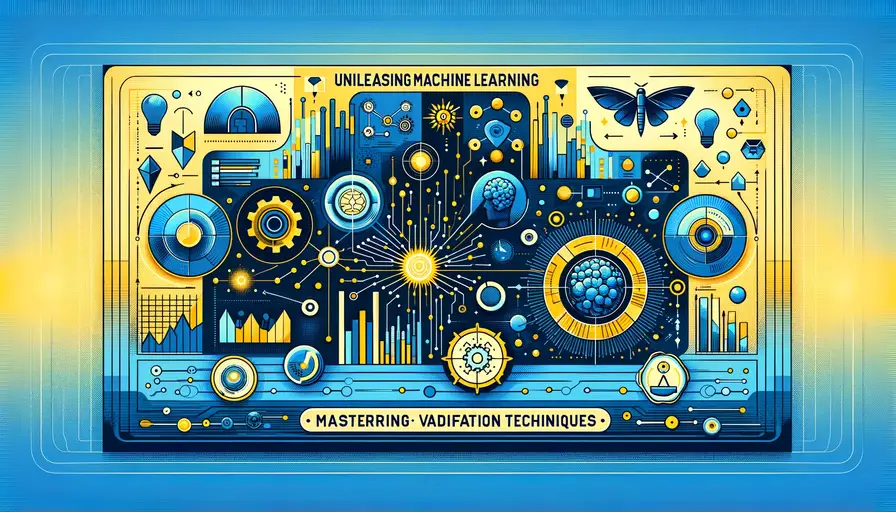
Comparing Machine Learning Techniques

Machine learning encompasses a wide range of techniques and algorithms, each suited to different types of problems and datasets. This comprehensive study explores various machine learning approaches, including supervised learning, unsupervised learning, ensemble methods, deep learning, feature selection, regularization, hyperparameter optimization, transfer learning, reinforcement learning, natural language processing, time series analysis, anomaly detection, model interpretability, and autoML tools. By understanding the strengths and applications of these techniques, practitioners can select the best approach for their specific needs.
- Supervised Learning Algorithms
- Unsupervised Learning Techniques
- Ensemble Learning Techniques
- Deep Learning Models
- Feature Selection and Dimensionality Reduction
- Regularization Techniques
- Hyperparameter Optimization
- Transfer Learning
- Reinforcement Learning Algorithms
- Natural Language Processing Techniques
- Time Series Analysis and Forecasting
- Anomaly Detection Algorithms
- Model Interpretability Techniques
- AutoML Tools
Supervised Learning Algorithms
Supervised learning algorithms are fundamental for classification and regression tasks where the goal is to predict a target variable based on input features. These algorithms learn from labeled data to make accurate predictions.
The Naive Bayes Classifier
Naive Bayes classifiers are probabilistic models that apply Bayes' theorem with the assumption of feature independence. They are particularly effective for text classification tasks, such as spam detection and sentiment analysis. Naive Bayes classifiers are easy to implement and computationally efficient, making them suitable for large datasets. Despite their simplicity, they often perform surprisingly well, especially when the independence assumption holds true.
Decision Trees
Decision trees are intuitive models that split data into subsets based on feature values, creating a tree-like structure. They are easy to interpret and visualize, making them useful for explaining model predictions to non-technical stakeholders. Decision trees can handle both numerical and categorical data and capture non-linear relationships. However, they are prone to overfitting, which can be mitigated by pruning techniques or by using ensemble methods like random forests.
 Linear Regression in Machine Learning with R: Step-by-Step Guide
Linear Regression in Machine Learning with R: Step-by-Step GuideSupport Vector Machines (SVM)
Support vector machines (SVM) are powerful algorithms for classification tasks. SVMs find the optimal hyperplane that separates data points into different classes with the maximum margin. They are effective in high-dimensional spaces and can handle non-linear relationships through kernel functions. SVMs are robust to overfitting, particularly in high-dimensional settings, but they can be computationally intensive for large datasets.
Random Forest
Random forests are ensemble methods that combine multiple decision trees to improve accuracy and robustness. Each tree in the forest is trained on a random subset of the data, and their predictions are averaged. Random forests reduce the variance of individual trees, leading to better generalization. They are versatile and can handle a variety of classification and regression tasks, making them a popular choice in many applications.
Unsupervised Learning Techniques
Unsupervised learning techniques are used to discover patterns and relationships in data without labeled outcomes. These methods are essential for exploratory data analysis and clustering tasks.
K-Means Clustering
K-means clustering partitions data into K clusters based on feature similarity. It is an iterative algorithm that minimizes the sum of squared distances between data points and their cluster centroids. K-means is simple and scalable, making it suitable for large datasets. However, it requires specifying the number of clusters beforehand and can be sensitive to initial centroid placement.
 Machine Learning Algorithms for Simultaneously Handling Two Datasets
Machine Learning Algorithms for Simultaneously Handling Two DatasetsHierarchical Clustering
Hierarchical clustering builds a tree of clusters by either merging or splitting them successively. It does not require specifying the number of clusters in advance and can reveal hierarchical relationships in the data. Hierarchical clustering is useful for smaller datasets due to its computational complexity. It provides a dendrogram, which helps visualize the clustering process and choose the optimal number of clusters.
DBSCAN
DBSCAN (Density-Based Spatial Clustering of Applications with Noise) is a clustering algorithm that groups data points based on density. It can find clusters of arbitrary shapes and handle noise effectively. DBSCAN does not require specifying the number of clusters and is robust to outliers. However, its performance depends on the selection of hyperparameters like epsilon and minimum samples, which can be challenging to tune.
Principal Component Analysis (PCA)
Principal component analysis (PCA) is a dimensionality reduction technique that transforms data into a lower-dimensional space while preserving as much variance as possible. PCA identifies the principal components, which are linear combinations of the original features that capture the maximum variance. It is useful for visualizing high-dimensional data and reducing computational complexity. PCA is widely used for exploratory data analysis and pre-processing before applying other ML algorithms.
Ensemble Learning Techniques
Combining multiple machine learning models can improve prediction accuracy and robustness. Ensemble methods leverage the strengths of different models to achieve better overall performance.
 The Potential of Decision Trees in Non-Linear Machine Learning
The Potential of Decision Trees in Non-Linear Machine LearningBenefits of Combining Machine Learning Models
Combining machine learning models through ensemble methods enhances predictive performance by reducing variance, bias, and improving generalization. Ensembles can correct the weaknesses of individual models, leading to more reliable and accurate predictions. They are particularly useful in complex tasks where no single model performs optimally across all scenarios.
Popular Ensemble Learning Techniques
Popular ensemble techniques include bagging, boosting, and stacking. Bagging (Bootstrap Aggregating) involves training multiple instances of the same model on different subsets of the data and averaging their predictions. Boosting sequentially trains models, with each new model focusing on correcting the errors of the previous ones. Stacking combines predictions from multiple models using a meta-model to produce the final output. These techniques enhance model robustness and accuracy, making them widely used in machine learning applications.
Deep Learning Models
Deep learning models are advanced neural networks capable of handling complex and large-scale datasets. They excel in tasks requiring high levels of abstraction and pattern recognition.
Convolutional Neural Networks (CNNs)
Convolutional neural networks (CNNs) are specialized for processing grid-like data such as images. They use convolutional layers to capture spatial hierarchies and patterns, making them highly effective for image recognition and computer vision tasks. CNNs have revolutionized fields like medical imaging, autonomous driving, and facial recognition due to their ability to learn intricate features from raw pixel data.
 Decision Tree vs Random Forest
Decision Tree vs Random ForestRecurrent Neural Networks (RNNs)
Recurrent neural networks (RNNs) are designed for sequential data, such as time series and natural language. RNNs use recurrent connections to capture temporal dependencies, making them suitable for tasks like language modeling, speech recognition, and sentiment analysis. Variants like Long Short-Term Memory (LSTM) and Gated Recurrent Units (GRU) address the vanishing gradient problem and enhance the ability to learn long-term dependencies.
Generative Adversarial Networks (GANs)
Generative adversarial networks (GANs) consist of two neural networks—the generator and the discriminator—that compete against each other. The generator creates fake data, while the discriminator distinguishes between real and fake data. GANs are powerful for generating realistic synthetic data, including images, text, and audio. They have applications in image synthesis, data augmentation, and creative arts.
Feature Selection and Dimensionality Reduction
Applying feature selection and dimensionality reduction techniques improves model efficiency by focusing on the most relevant features and reducing the data's dimensionality.
Feature selection techniques, such as recursive feature elimination (RFE) and mutual information, identify and retain the most important features, enhancing model interpretability and performance. Dimensionality reduction methods like PCA and t-SNE transform data into a lower-dimensional space, preserving essential information while reducing computational complexity. These techniques are crucial for handling high-dimensional datasets and improving model performance.
 Optimal Frequency for Regression Testing: How Often is Ideal?
Optimal Frequency for Regression Testing: How Often is Ideal?Regularization Techniques
Regularizing machine learning models prevents overfitting and improves generalization by adding constraints to the model's complexity.
L1 Regularization (LASSO)
L1 regularization (LASSO) adds an L1 penalty to the loss function, encouraging sparsity in the model's weights. It effectively performs feature selection by shrinking less important feature coefficients to zero, making the model simpler and more interpretable.
L2 Regularization (Ridge Regression)
L2 regularization (Ridge Regression) adds an L2 penalty to the loss function, preventing large weight coefficients and reducing overfitting. It distributes the penalty uniformly across all weights, maintaining all features while controlling their impact on the model.
Elastic Net Regularization
Elastic Net Regularization combines L1 and L2 penalties, balancing the benefits of both methods. It is useful for datasets with highly correlated features, providing robust regularization and feature selection.
 Securing and Ensuring Reliability of Your Machine Learning Pipeline
Securing and Ensuring Reliability of Your Machine Learning PipelineHyperparameter Optimization
Optimizing hyperparameters of machine learning models is essential for achieving better performance. Various techniques can be employed to find the optimal hyperparameters.
Grid Search
Grid search is an exhaustive search method that evaluates all possible combinations of hyperparameters within a specified range. While computationally intensive, it ensures the identification of the best hyperparameter set for the model.
Random Search
Random search randomly samples hyperparameter combinations within a specified range. It is more efficient than grid search and can identify good hyperparameters with fewer evaluations.
Bayesian Optimization
Bayesian optimization builds a probabilistic model of the objective function and selects hyperparameters by balancing exploration and exploitation. It is efficient and effective for complex optimization problems with expensive evaluations.
Genetic Algorithms
Genetic algorithms simulate the process of natural selection to optimize hyperparameters. They evolve a population of candidate solutions over multiple generations, selecting the best-performing individuals and applying crossover and mutation to generate new candidates. Genetic algorithms are robust and can explore large hyperparameter spaces.
Transfer Learning
Using transfer learning to leverage pre-trained models improves learning efficiency and performance. Transfer learning involves fine-tuning a model pre-trained on a large dataset for a specific task.
Transfer learning is particularly useful for tasks with limited labeled data. Pre-trained models like BERT, GPT, and ResNet have already learned rich representations from large corpora, allowing them to adapt quickly to new tasks with fewer labeled examples. This approach enhances model performance and reduces training time.
Reinforcement Learning Algorithms
Implementing reinforcement learning (RL) algorithms optimizes decision-making processes by learning from interactions with the environment.
Q-Learning
Q-learning is an off-policy RL algorithm that learns the value of taking an action in a particular state. It updates the action-value function (Q-value) based on the reward received and the estimated future rewards, allowing the agent to learn optimal policies.
SARSA
SARSA is an on-policy RL algorithm that updates the Q-value based on the action actually taken by the agent, following its current policy. It learns the value of the policy it follows, ensuring consistency between learning and execution.
Deep Q-Networks (DQN)
Deep Q-networks (DQN) combine Q-learning with deep neural networks to handle high-dimensional state spaces. DQNs use experience replay and target networks to stabilize training, enabling the agent to learn complex policies from raw sensory inputs.
Natural Language Processing Techniques
Using natural language processing (NLP) techniques to process and analyze text data is essential for understanding and generating human language.
Tokenization
Tokenization involves splitting text into individual words or tokens. It is a fundamental step in NLP that prepares the text for further processing and analysis.
Stop Word Removal
Stop word removal eliminates common words like "and," "the," and "is" that do not contribute significant meaning. This step reduces noise and improves the efficiency of text analysis.
Part-of-Speech Tagging
Part-of-speech tagging assigns grammatical tags to each word in the text, such as noun, verb, or adjective. This information helps in understanding the syntactic structure and meaning of the text.
Named Entity Recognition
Named entity recognition (NER) identifies and classifies entities in the text, such as names of people, organizations, locations, and dates. NER is crucial for extracting meaningful information from text data.
Sentiment Analysis
Sentiment analysis determines the sentiment expressed in the text, classifying it as positive, negative, or neutral. It is widely used in opinion mining, customer feedback analysis, and social media monitoring.
Time Series Analysis and Forecasting
Applying time series analysis and forecasting methods predicts future trends based on historical data. These techniques are essential for applications like financial forecasting, demand planning, and climate modeling.
Autoregressive Integrated Moving Average (ARIMA)
ARIMA models combine autoregression, differencing, and moving averages to capture temporal dependencies and trends in time series data. They are widely used for short-term forecasting.
Exponential Smoothing Methods
Exponential smoothing methods, such as Holt-Winters, apply weighted averages of past observations, giving more weight to recent data. These methods are effective for handling seasonality and trends.
Seasonal ARIMA (SARIMA)
Seasonal ARIMA (SARIMA) extends ARIMA to handle seasonal patterns in time series data. It incorporates seasonal differencing and seasonal autoregressive and moving average components.
Long Short-Term Memory (LSTM) Networks
Long short-term memory (LSTM) networks are a type of recurrent neural network (RNN) designed to capture long-term dependencies in sequential data. LSTMs are effective for time series forecasting and sequence prediction tasks.
Anomaly Detection Algorithms
Using anomaly detection algorithms identifies and handles unusual patterns in data, which is crucial for fraud detection, network security, and fault diagnosis.
Isolation Forest
Isolation Forest isolates anomalies by randomly partitioning the data. Anomalies are identified as points that require fewer partitions to be isolated. This method is efficient and effective for high-dimensional datasets.
One-Class Support Vector Machines (SVM)
One-Class SVM identifies anomalies by learning a decision boundary that encompasses the majority of the data points. It is suitable for scenarios where the normal class is well-defined.
Local Outlier Factor (LOF)
Local Outlier Factor (LOF) measures the local density deviation of a data point with respect to its neighbors. Points with significantly lower density than their neighbors are identified as anomalies.
Gaussian Mixture Models (GMM)
Gaussian Mixture Models (GMM) use a probabilistic approach to model the data as a mixture of multiple Gaussian distributions. Anomalies are identified as points with low probability under the model.
Model Interpretability Techniques
Implementing model interpretability techniques helps in understanding and explaining machine learning models, making them more transparent and trustworthy.
Why Interpretability is Important
Interpretability is crucial for building trust in machine learning models, particularly in high-stakes applications like healthcare and finance. Understanding how a model makes decisions helps in identifying potential biases and ensuring ethical use.
Types of Interpretability Techniques
Interpretability techniques include feature importance, partial dependence plots, SHAP (SHapley Additive exPlanations), and LIME (Local Interpretable Model-agnostic Explanations). These methods provide insights into the model's decision-making process and highlight the contributions of different features.
Benefits of Using Interpretability Techniques
Using interpretability techniques enhances model transparency, facilitates debugging, and improves trust in the model's predictions. It helps stakeholders understand the model's behavior and make informed decisions based on its outputs.
AutoML Tools
Using autoML tools automates the process of model selection and hyperparameter tuning, making machine learning more accessible and efficient.
Why Use AutoML Tools?
AutoML tools simplify the machine learning workflow by automating repetitive tasks, reducing the need for extensive expertise. They enable faster experimentation and deployment, allowing practitioners to focus on higher-level problem-solving.
Popular AutoML Tools
Popular autoML tools include Google Cloud AutoML, H2O.ai, DataRobot, and AutoKeras. These tools provide end-to-end solutions for building, tuning, and deploying machine learning models, making them valuable resources for practitioners of all skill levels.
Comparing machine learning techniques involves understanding the strengths and applications of various algorithms and approaches. By leveraging supervised and unsupervised learning, ensemble methods, deep learning, feature selection, regularization, hyperparameter optimization, transfer learning, reinforcement learning, NLP, time series analysis, anomaly detection, interpretability techniques, and autoML tools, practitioners can select the best techniques for their specific needs. This comprehensive understanding enables the development of robust and effective machine learning models, ultimately driving better insights and decisions across various domains.
If you want to read more articles similar to Comparing Machine Learning Techniques, you can visit the Algorithms category.






You Must Read